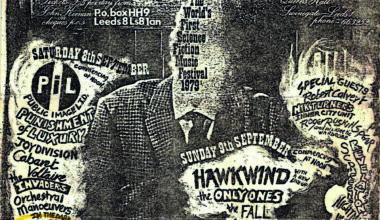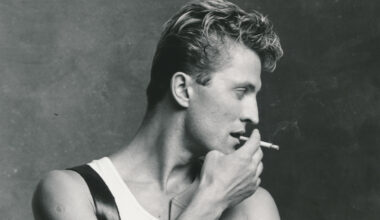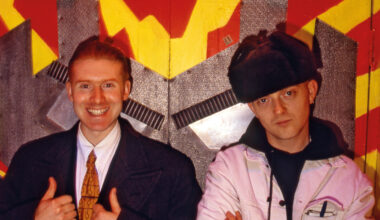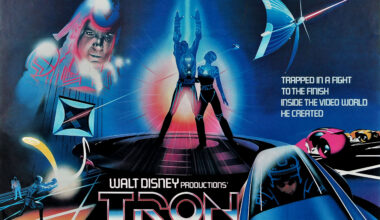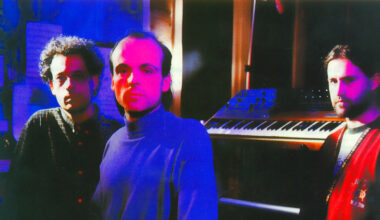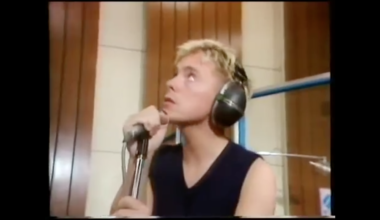David M Allen, who was just Dave Allen when he was the engineer on The Human’s League’s ‘Dare’ album, recalls the birth of Martin Rushent’s legendary Genetic Studios
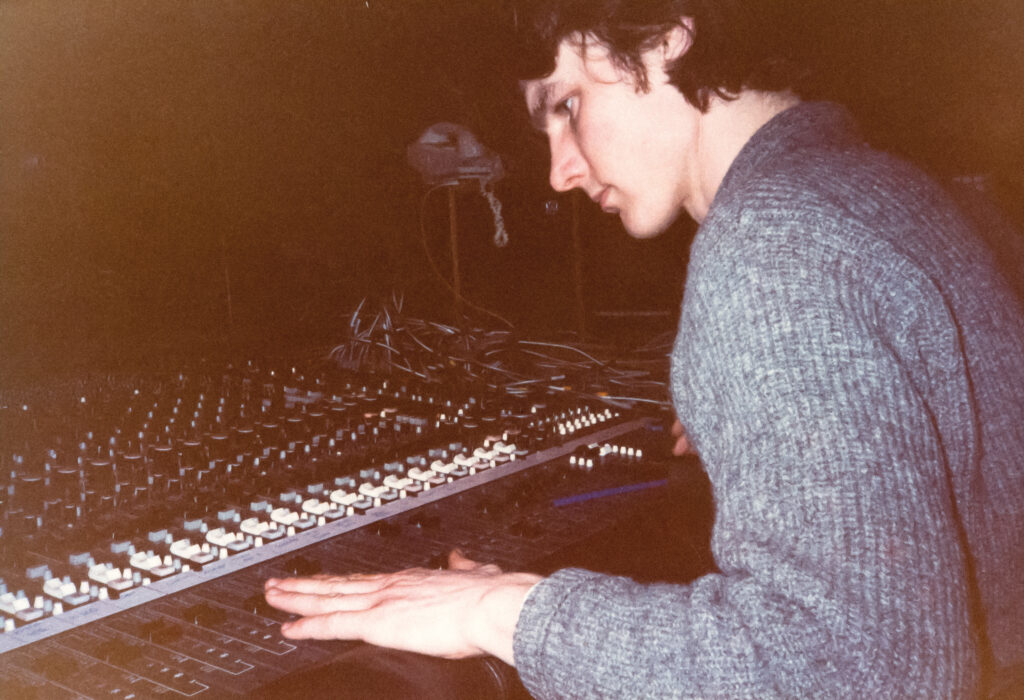
We all know how the electronic pop sensibilities of The Human League’s ‘Dare’ album changed the musical landscape in 1981, but where did all those shiny new sounds come from? David M Allen’s ‘The Genetic Tape’ release provides some answers. It features the first electronic music to emerge from Martin Rushent’s Genetic Studios in Berkshire, where The Human League crafted their masterpiece. The nine tracks on ‘The Genetic Tape’ were recorded by Allen and Rushent in 1980, on the very machines they later used for ‘Dare’, which was produced by Rushent and engineered by Allen.
Dave Allen first met Martin Rushent when he produced Pinpoint, a punk band in which Allen sang and played bass. Pinpoint recorded their one and only album in London and, at Rushent’s request, decamped to Genetic to finish it off. Once they were there, Allen asked if the band could do a couple of new tracks using some of the seemingly space-age kit that was amassing at the fledgling studio. Rushent, who had just acquired a Roland MC-8 Microcomposer and Roland System 700 with little idea what they could do, was more than happy to say yes. The first fruit was a song called ‘Drowning In The Wave Of Life’ and the pair spent an entire day wrestling the MC-8 just to lay down a rhythm sequence that followed the track’s chords.
“The MC-8 was really complicated to use let alone synchronise and the whole sequencer part was put down ‘live’,” recalls Allen. “I remember being so excited that I took a cassette of just the sequencer part home with me.”
Allen’s thrill wasn’t shared by his bandmates and Pinpoint imploded shortly after finishing the album, leaving Allen to embark on a solo career. Returning to Genetic, he and Rushent recorded another track, ‘The Sound Of Musak’, in the autumn of 1980, again using the MC-8 and also Rushent’s newest purchase, a Simmons Analog Drum Synth. A couple of months later, Rushent flew to New York for a production job and asked Allen if he wanted to have some demo time while he was away in the States. He jumped at the chance.
“When Pinpoint first went to Genetic, we arrived expecting this amazing country studio and it was a building site, with the original studio in a ramshackle bungalow,” remembers Allen. “By this point, the new studio had a control room that was almost finished, but the live area was still full of scaffolding and rubble. It was a windowless room with a ceiling made from a 35-ton piece of reinforced concrete, the biggest piece of concrete in Berkshire, bar the silos at Greenham Common.
“I had no musical training other than being in the church choir to get two shillings and sixpence for weddings, so Martin said the maintenance engineer, a guy called Pete, would help me with any technical difficulties. But the day I arrived, Pete had a huge row with Martin over the phone. He told me he was leaving and not coming back. So I quickly sat him down with a reporter’s notebook and asked loads of questions. By 5.30pm, I was sitting on my own surrounded by manuals and with a head full of mashed-up audio technology facts.”
Allen holed up in the new studio for nearly two weeks, sleeping on the control room couch and occasionally showering in the nearby family house, where Rushent’s wife Linda ensured he was fed and watered. After 10 days he was, in his own words, “manic, exhausted and deaf”, but he’d figured out how to use the drum machine and how to get orchestral voicings out of synths, as well as why the status of the desk kept reversing itself overnight so that input was output.
He’d also devised a way of running code through a delay line set at 100 milliseconds delay to compensate for the System 700 and the Simmons running slightly out of time. And in the process, he had somehow managed to complete five demos, which appear on ‘The Genetic Tape’ alongside ‘The Sound Of Musak’ and a dub version of ‘Drowning In The Wave Of Life’.
“A few days after returning home from New York, Martin called me and we arranged a meeting to listen to what I’d done,” says Allen. “I reckon he thought to do what I did from a standing start was kind of an indicator of raw talent. The following day he called and offered me a job.”
Over the next few years, Dave Allen engineered countless recording sessions at Genetic, sometimes working with Rushent and sometimes directly with the bands. As well as The Human League, he engineered the likes of The Associates, Dead Or Alive, Altered Images, Hazel O’Connor and The Members. By the mid-1980s, Allen was a sought-after producer in his own right, producing The Cure (he oversaw all their albums from 1984 to 1992), The Sisters Of Mercy (working with Wayne Hussey, who he first met when Hussey was in Dead Or Alive), Thomas Leer, The Chameleons, The Charlatans, World Domination Enterprises and scores of other artists.
‘The Genetic Tape’ is available on AngloCentric via iTunes
